This diagram shows a simulated view of the black disk of Venus against the backdrop of the Sun during the Venus transit of June 2004. The yellow arrows show the path of Venus across the face of the Sun throughout the course of the transit.
This illustration is original Windows to the Universe artwork created by Randy Russell. The image of the Sun is courtesy SOHO (ESA & NASA); information on the apparent size and path of Venus courtesy Fred Espenak, NASA's GSFC.
Venus Transit in June 2004
News story originally written on June 2, 2004
A rare astronomical event will occur in early June 2004. For the first
time since 1882, Earthlings will be able to view a transit
of the planet Venus. "Transit"
is a term used by astronomers when a planet passes directly between Earth and
the Sun. A transit is somewhat similar to a total solar
eclipse, when the Moon
passes between Earth and the Sun.
This Venus transit will occur on June 8, 2004. There will be another transit
of Venus in 2012. If you miss that one you will have to wait
more than a century for the next opportunity!
During the transit, observers will see a small black dot slowly creep across
the face of the Sun. The dot, Venus, will take about six hours to complete
the transit. Remember, it is never safe to directly view the Sun. For tips
on how to safely view the transit and what can be seen from where you live,
check out this
NASA web site.
You might also be interested in:

The planet Venus periodically passes directly between Earth and the Sun. This event, which is somewhat similar to a solar eclipse, is called a transit of Venus. Viewed from Earth, Venus and Mercury are
...more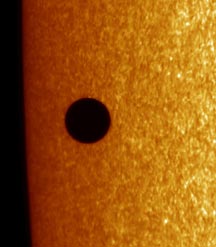
A "transit" is the name of a type of astronomical event. A transit is similar to a solar eclipse, except a transit involves a planet, instead of the Moon, passing in front of the Sun. As viewed from Earth,
...more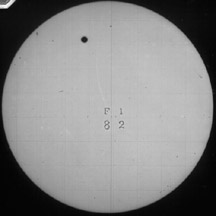
Transits of Venus are extremely rare astronomical phenomena. They occur in pairs, separated by eight years, with more than a century elapsing between successive pairs of transits. There will be two Venus
...more
The planet Mercury will cross in front of the disk of the Sun on Wednesday, November 8, 2006. Astronomers call the event a transit. A transit is similar to a solar eclipse. However, a transit occurs when
...more
A rare astronomical event will occur in early June 2004. For the first time since 1882, Earthlings will be able to view a transit of the planet Venus. "Transit" is a term used by astronomers when a planet
...more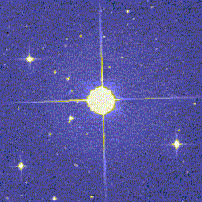
Astronomers have identified another exoplanet, that is, a planet outside our solar system. This makes a total of 102 exoplanets that have so far been found by astronomers! The astronomers that identified
...more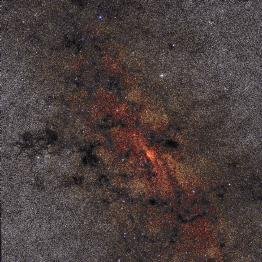
Thanks to a couple of telescopes, everyone on the internet can browse through almost 2 million images. Stars throughout the sky were photographed by the Two-Micron All Sky Survey (2MASS) and are now available
...more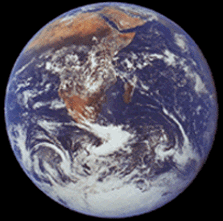
Earth may look perfectly spherical from space, like a giant marble, but it actually isn't! Since the first satellites were launched, scientists realized that Earth is not a sphere. Instead, our planet
...more












